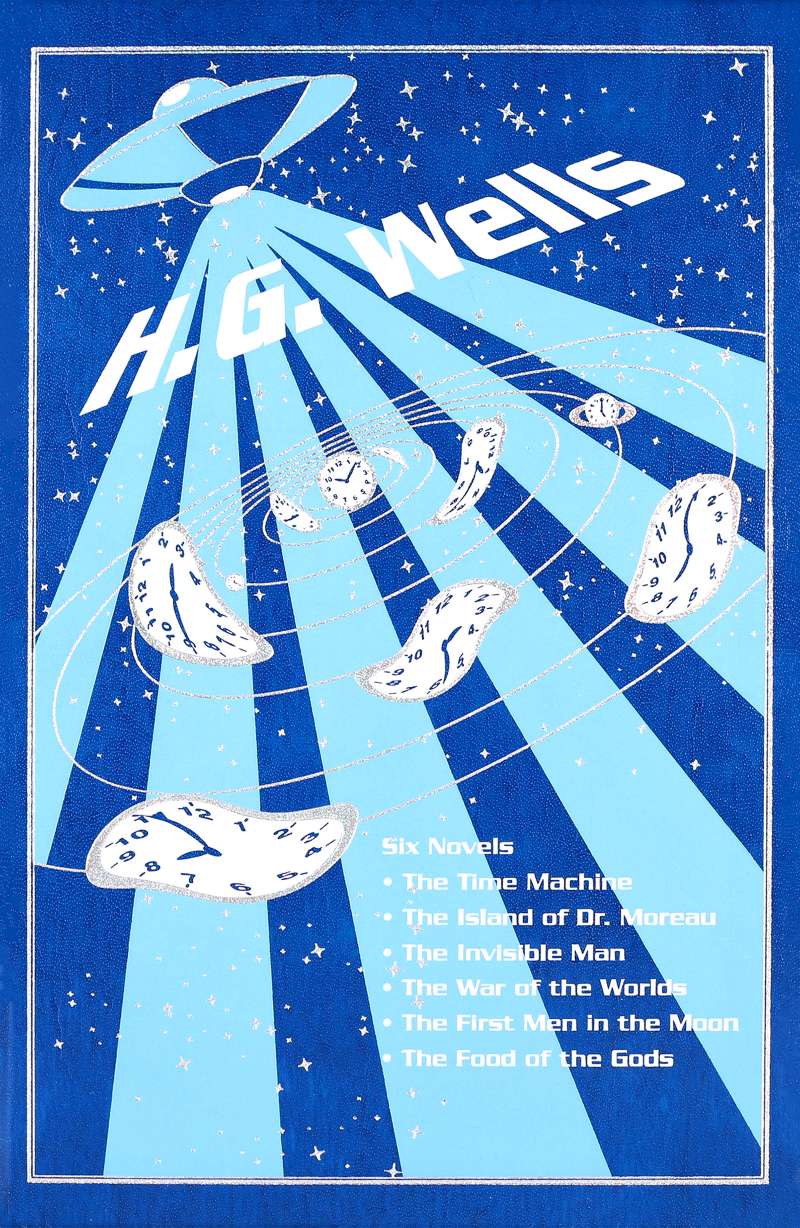September 21, 2023 marks the 157th anniversary of the birth of English author H.G. Wells. A prolific writer who published works on many subjects, he’s best known for his foundational science-fiction works. Not only did he influence the way science-fiction was made, he seemed to inspire real-life science (or at least he was a keen predictor of things yet to come).
Add the collection from H.G. Wells to your library today.
On the page: In War of the Worlds (1898) invading aliens obliterate humans with a heat ray. First it engulfs the victims in flames, and then it makes them disappear.
In real life: In 2013, the U.S. Marines introduced the Active Denial System, a non-fatal weapon that shoots a wavelength that causes the overwhelming sensation of burning.
On the page: In The Island of Doctor Moreau (1896) a mad scientist creates new, monstrous animal hybrids by sewing them together.
In real life: That presaged the development of genetic engineering, which binds different lifeforms together at a DNA level to create new beings with certain advantages — crops that can grow larger and be resistant to bugs, for example.
On the page: In The Sleeper Awakes (1899), Wells predicts that the future will hold all kids of delights — like doors that automatically open as humans approach.
In real life: The first such doors started appearing in 1960, and they’re all over the place today, mostly at grocery and big-box stores.
On the page: Wells’ war-themed short story “The Land Ironclads” from 1903 imagines that wars of the future will be fought by soldiers in trenches and large, mechanical, tough to control “insects” with firing cannons.
In real life: About a decade and a half later, Wells’ prophecy would come true in the form of The Great War, fought by soldiers in trenches…and tanks.
On the page: In 1923’s Men Like Gods, Wells predicts that future-folk will be able to send a message to anyone they desire, and it will wait for the recipient, recorded, until they choose to address it. In 1933’s The Shape to Come, Wells says future people will be glued to their handheld, untethered, instant communication devices.
In real life: In those two books, Wells showed us that voicemail and cell phones were around the corner.
On the page: The World Set Free (1913) details the widespread devastation wrought by militaries who pummel enemy cities with a super-weapon called “atomic bombs.” Using nuclear power for their destructive might, they also leave a mushroom cloud and toxic levels of radiation in their wake.
In real life: Wells predicted the Manhattan Project, J. Robert Oppenheimer’s life’s work, and the dropping of atomic bombs on Hiroshima and Nagasaki, Japan, in 1945, which brought an end to World War II.
Read about the future by looking to the past! Canterbury Classics offers the works of “the father of sci-fi” in two beautiful bound and lovingly compiled collections: Classic Science Fiction, and Classic Tales of Science Fiction & Fantasy.









